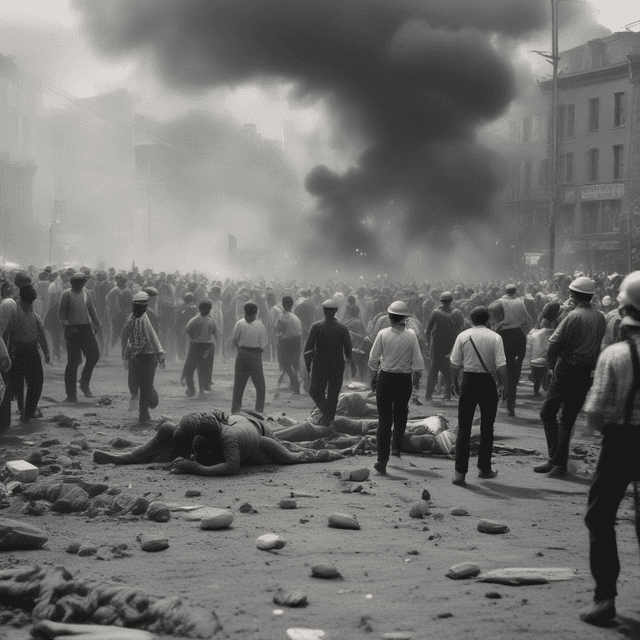
| Name | Alternate Civil Rights Movement |
| Impact | More limited compared to real-world movement |
| Timeline | Divergent from real-world events |
| Achievements | Dismantling of Jim Crow segregation • Expansion of voting rights for African Americans |
| Key Differences | Lack of centralized leadership • Limited federal government support • Uneven progress across regions and factions |
The Civil Rights Movement in the United States was a decades-long struggle by African Americans to end the system of racial segregation and discrimination that had persisted since the end of the American Civil War. Through a combination of nonviolent protests, legal challenges, and community organizing, the movement ultimately succeeded in securing landmark federal civil rights legislation and expanding political and economic opportunities for Black Americans.
The origins of the modern Civil Rights Movement can be traced back to the 1930s and 1940s, as African Americans in the Southern United States increasingly pushed back against the entrenched system of Jim Crow laws and social customs that enforced racial segregation. Key early events included the Montgomery Bus Boycott in 1955-1956, sparked by Rosa Parks' refusal to give up her seat on a segregated bus, as well as the Greensboro Sit-ins in 1960, where college students staged nonviolent protests at whites-only lunch counters.
However, without the unifying influence of a charismatic national leader like Martin Luther King Jr., the early Civil Rights Movement lacked a cohesive, coordinated strategy. Different regional and ideological factions emerged, each pursuing their own approaches and priorities. Nonviolent integrationists focused on desegregating public facilities and securing voting rights, while more militant Black nationalist groups advocated for black self-determination and separatism.
As the 1950s gave way to the 1960s, the Civil Rights Movement became an increasingly diverse, decentralized landscape of local and regional activism. In the Deep South, groups like the Southern Christian Leadership Conference (SCLC) and the Student Nonviolent Coordinating Committee (SNCC) led mass protests, boycotts, and voter registration drives. Meanwhile, in Northern cities, the Congress of Racial Equality (CORE) and the Nation of Islam pursued distinct agendas, ranging from nonviolent civil disobedience to black separatism and self-defense.
This lack of a unified, national movement presented both opportunities and challenges. On one hand, the diversity of tactics and ideologies allowed the Civil Rights Movement to respond to a wide range of local conditions and grievances. On the other, it also sowed divisions and competing visions for the future of racial equality in America.
In the real-world timeline, the Kennedy administration and the landmark Civil Rights Act of 1964 and Voting Rights Act of 1965 played crucial roles in empowering the Civil Rights Movement and dismantling Jim Crow. However, in this alternate history, the absence of the Kennedy political dynasty meant the federal government's response was more tepid and delayed.
President Lyndon B. Johnson, while sympathetic to the goals of the Civil Rights Movement, was more cautious and incremental in his approach. It was not until 1966 that the Johnson administration pushed through the first major civil rights legislation, the Civil Rights Act of 1966, which banned discrimination in public facilities and employment. The Voting Rights Act of 1967 followed shortly thereafter, but its impact was muted by continued state-level resistance and lack of robust federal enforcement.
Despite the lack of centralized leadership and limited federal support, the Civil Rights Movement still managed to achieve significant victories in this alternate timeline. Mass protests, legal challenges, and community organizing chipped away at the edifice of Jim Crow, integrating public facilities, expanding voting rights, and opening up new economic opportunities for African Americans.
However, the movement's ultimate impact was more uneven and less sweeping than in the real world. Racial inequality and discrimination persisted in many areas, especially in the Deep South, where entrenched white supremacist power structures proved stubbornly resistant to change. Additionally, the absence of a charismatic leader like Martin Luther King Jr. meant the Civil Rights Movement lacked the same moral authority and national resonance.
Still, the Civil Rights Movement's struggles and achievements reverberated through American society, permanently altering the political, social, and cultural landscape. Its legacy of activism, protest, and a steadfast commitment to racial justice continues to inspire new generations of civil rights advocates in this alternate timeline.